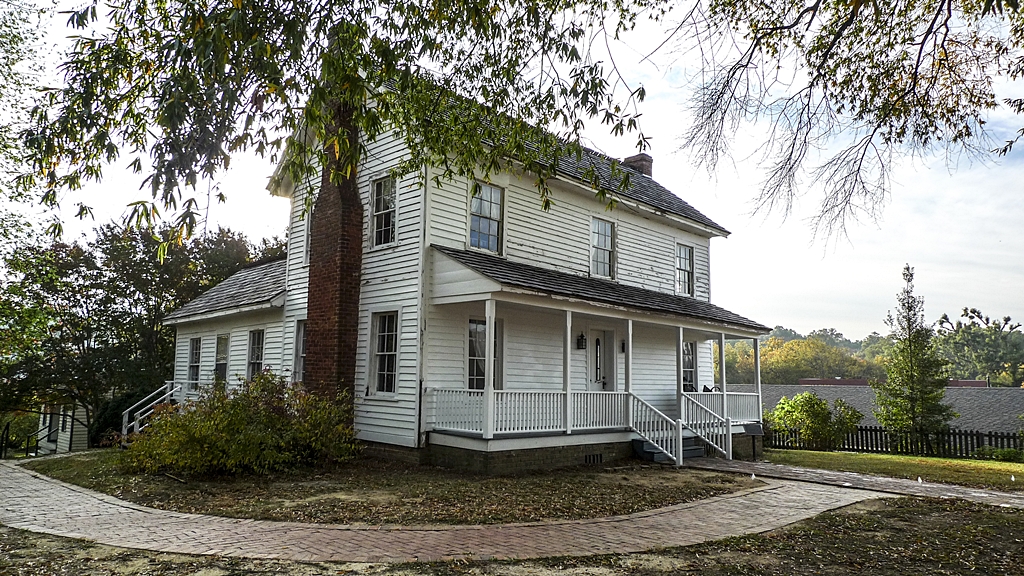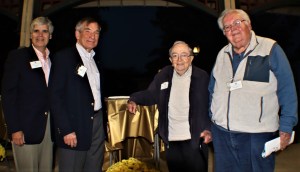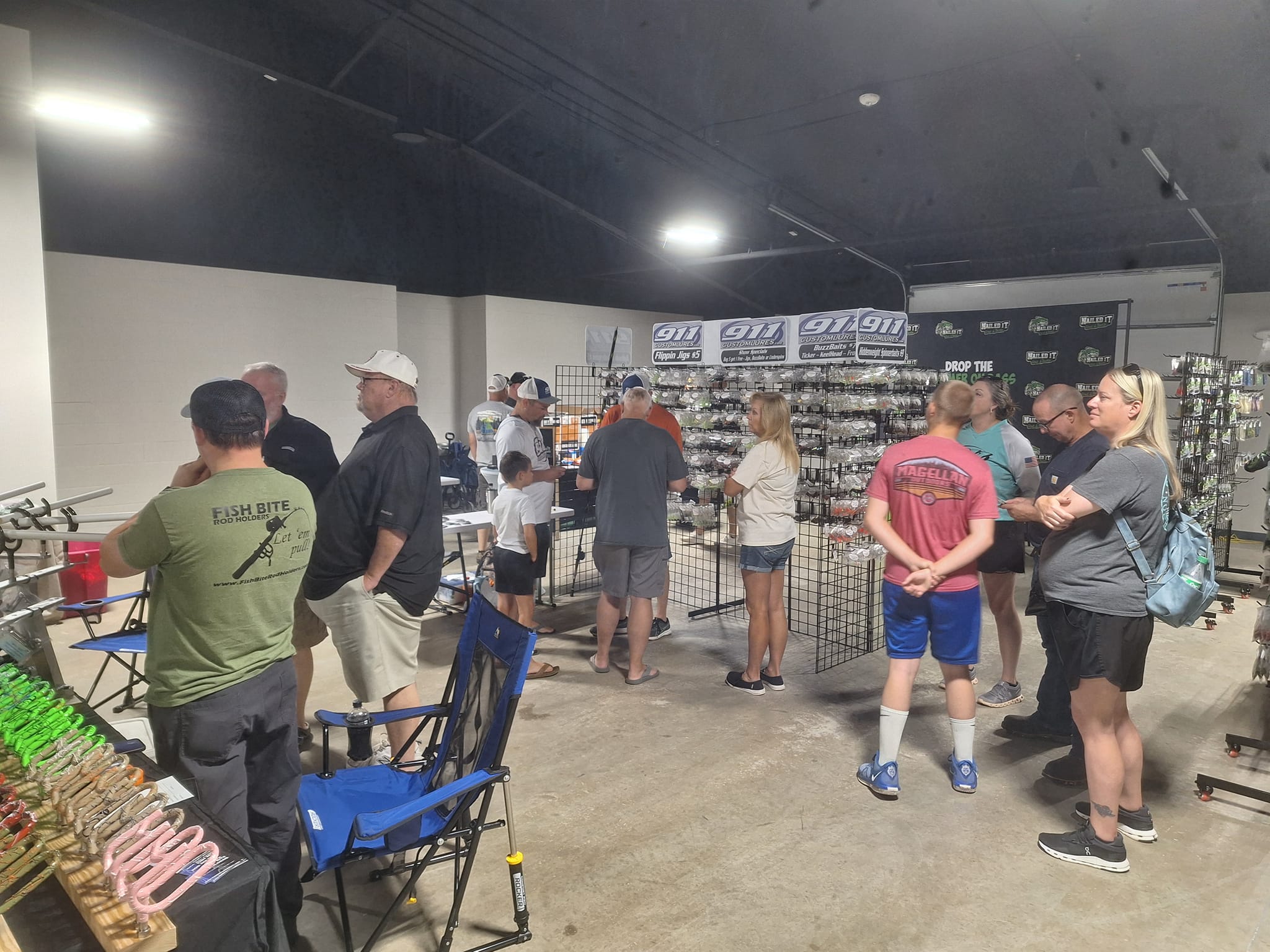SPIRIT OF STANLY: Snuggs House offers rare glimpse into the past
Published 12:29 pm Monday, March 29, 2021

- The Snuggs House is the oldest dwelling in Albemarle which still stands on its original site. Photo courtesy of Megan Sullivan.
|
Getting your Trinity Audio player ready...
|
Over the years, one of the best ways for people in Stanly County to catch a glimpse of life in the past has been to take a walk through the oldest dwelling in Albemarle which still stands on its original site — the I.W. Snuggs House, located at 112 N. Third St.
The house, which has been around for almost 170 years, has been listed on the National Register of Historic Places since 1995 and is frequented by hundreds of people each year, including many local students during field trips. While it has been renovated over the years, the property’s decor and overall aesthetic is still representative of a typical antebellum southern home.
Located just behind the house is the Freeman-Marks House, which was built in 1847, though the house was later moved to its current location.
Trending
The Snuggs House has been around almost as long as the county itself, which was formed in 1841.
“It represents the history of Stanly County as it was being formed, in pre- and post-Civil War,” said Stanly County History Center Director Megan Sullivan. “It really lets people of Stanly County know their history and have a personal connection to the people who lived here before and see what life was like for them.”

An older image of the Snuggs House. Photo courtesy of Megan Sullivan.
Being one of the prized historical gems in the county, it played a big factor in Sullivan accepting the position as museum director five years ago.
“I think it’s pretty rare to have these kind of houses still exist in counties,” she said. “I felt that the county really recognized and appreciated their history and where they came from.”
With so many houses in the South being destroyed and burned during the Civil War, Sullivan said it’s even more notable that both the Snuggs and Freeman-Marks’ properties are still around and in good condition.
As a way to encourage more people to explore the house and its history, the Stanly County Historical Society, which owns it and the Freeman-Marks House, has been raising money for the continued preservation of both historical properties. The house is open to the public from 2 p.m. until 5 p.m. on the second Sunday of each month.
Trending
“To me, those houses are a touchstone to a past that we need to be aware of because our future and where we are in the present is largely built on people and places that have been here before,” said Historical Society secretary Jim Sawyer.
History of Mr. Snuggs
Deeds and tax records indicate the house was built in 1852 by David Austin, who purchased the lot in 1848 for $15, according to the information from the Stanly County Museum. The house changed hands numerous times over the next 20 years before being purchased by Lafayette Green, a prominent attorney and a member of the House of Representatives, in 1865.
Isaiah Wilson Snuggs, who was born in Randall’s community near what is now Norwood, purchased the log house from Green eight years later for $375.
Snuggs fought for the Confederate Army in the Civil War in 1864, where he became wounded in the right leg during the Battle of Spotsylvania Court House in Virginia. He was hospitalized and his right leg amputated. He later got a pegleg, according to Sullivan. Soon after recovery, Snuggs was imprisoned at Elmira, New York for the remainder of the war.
After the war, Snuggs returned to Albemarle, where he worked with his cousin as a saddle maker and leatherworker. He married Ellen Milton and settled down to raise a family. Almost immediately after purchasing the cabin from Greene, Snuggs went to work improving and expanding the structure, transforming the cabin’s original core into a modern two-story home.
By the mid-1880s, Snuggs added a second story to the home for his growing family — two daughters, Bertie and Mary, and two sons, Edgar and Henry.

Snuggs family, circa 1885. From left to right: William Henry, Isaiah Wilson, Bertha Estella, Mary Cleveland, Ellen Douglas Milton, and Edgar Eugene Snuggs. Photo courtesy of Megan Sullivan.
Snuggs came to hold several local offices in the county, including treasurer, register of deeds and sheriff. As sheriff, Snuggs interacted with a variety of politicians, community leaders and law breakers, according to the museum.
“He was a very colorful character,” Sullivan said of Snuggs.
One of his most famous prisoners was Alec Whitley.
Whitley was accused of theft and murder in Stanly County and in Arkansas. Following a short manhunt through several states, he was captured by a local group near Big Lick in 1892.
Shortly after his capture and incarceration, a mob of angry citizens gathered at the jail (where the library now stands) to demand Whitley be turned over to them. Snuggs had been alerted to the mob’s intention and he transferred all the prisoners from the jail to his own home across the street — except Whitley, who was seized by the mob, beaten and hanged from a tree off South Street.
The museum notes that Snuggs was also a skilled businessman, investing in real estate, timber and a saw mill. The saw mill was on what is now the northeast corner of First Street and King Avenue. It is believed lumber cut and tooled at his mill was used to expand the Snuggs House in the mid-1880s.
The house has undergone numerous renovations and remodels over the years. At one point in the 1970s, the property was renovated to serve as offices and exhibition space for the County Historic Properties Commission and Historic Museum. In the last decade, structural repairs to the foundation and the porch were completed, a new (historically accurate) roof was installed and sheetrock and paneling have been pulled away to reveal original wall surfaces and allow closer examination of both the original log structure and renovations done since 1874.
A Haunted Historical House?
While Sullivan has never personally experienced any paranormal activity, she does know people who have. Sullivan noted that one of the prior museum directors, Jonathan Underwood, experienced odd happenings inside the house.
Sullivan has heard from others that at times certain items would be knocked over “and the weight of the items made it specifically impossible for them to have fallen over by themselves.” During another incident, a picture supposedly fell off the wall and was later found halfway across the room.
Sullivan recalls that one time local storyteller Susan Sharples was giving a tour when a man made a disparaging comment about I.W. Snuggs’ daughter’s wedding dress. As the man was walking across the hallway, one of the chandelier light bulbs exploded over his head.
Sullivan also included the house as part of her interactive ghost tour last fall, due to the lynching of Whitley.
According to an excerpt from an article in the Salisbury Post regarding Whitley: “Over the years, (museum) staff have reported a variety of unexplained incidents, leading to at least one volunteer to quit. If you happen to attend a tour at the Snuggs House be sure to be careful; it is possible that the ghost of Alec Whitley still resides there, seeking his revenge from beyond the grave.”
Raising money for the properties
Two years ago, the Stanly County Historical Society, which was incorporated in 2013, negotiated with the Stanly County Board of Commissioners to accept ownership of the Historic Isaiah W. Snuggs House and the Freeman-Marks House. Both of these properties were restored by the Stanly County Historic Preservation Commission during the period of 1975-1986.

Kent Harkey, Jim Sawyer, Dr. J.C. Boone, and Dr. Robert Gaither have launched a campaign to raise funds to help Stanly County Historical Society maintain the Freeman-Marks House and the Isaiah W. Snuggs House. Photo courtesy of Kent Harkey.
After conducting a feasibility study to determine the society’s ability to accept responsibility of the recurring costs of operation and capital improvements of the properties, it established an endowment fund to perpetually care for the historic properties.
Last November, the society launched a six-month financial campaign to raise funds for the continued preservation of the two houses. Historical Society President Kent Harkey said that as of Feb. 4, the society has attained 50 percent of its $550,000 goal from legacy gifts and pledges.
The Historical Society continues to make necessary improvements on the homes. Last year the group completed interior painting of three rooms in the Snuggs House, along with removing the large oak tree in the front yard. From April through December, the Historical Society incurred more than $21,000 in operational expenses and capital improvements for the museum houses, Harkey said.

Ellen McCarter and Dustin Adcock plant new plants at the Historic Snuggs House in 2018.
The coronavirus pandemic forced the Historical Society to cancel its in-person education programs last year, though the group was able to transition to online presentations which can be can be accessed from historicstanly.org or viewed on its YouTube channel. Harkey said that while the traditional programs often averaged between 100 to 150 people in attendance, the online presentations “are being viewed by nearly three times that number.”
The Historical Society’s marketing and special events committee has outdoor events planned throughout 2021. It partnered with Uwharrie Bottle Club in March to host its annual antique bottle show and in April will host a quilt show with Three Rivers Quilt Guild. A number of lawn concerts are also scheduled throughout the year.







